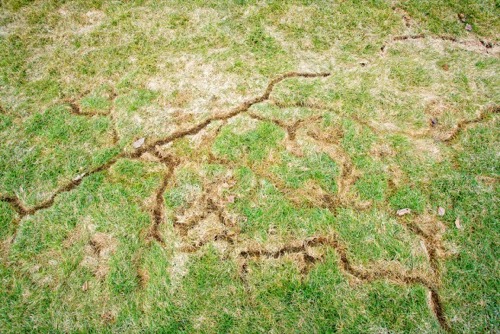The Tell-Tale Signs of Voles
Recognizing Surface Runways & Tunnels
- Vole runways are on the top of the soil, created in the grass.
- Voles like to keep these often used runways clear, and will keep the grass or other vegetation clipped close to the ground. The longer vegetation or grass surrounding the tunnels that is left unclipped forms shelter over the runways.
- The runways are about an inch and a half wide.
- Voles do create burrow systems underground as well, and you may see small mounds of dirt indicating burrow openings.
These runway systems are very noticeable in the spring after snow melts. Since voles will have the extra shelter of snow, they will move out into the more open areas of your yard and you'll see the crisscrossing paths on the ground.
To check if you have voles active in your yard, or to check which runways are being used, check for an accumulation of droppings, no growing vegetation/roots in the middle of the runway, and freshly cut or clipped grass of the runway.Signs of Vole Damage

In the fall and winter, their gnawing behavior can damage bark of bushes and trees.





